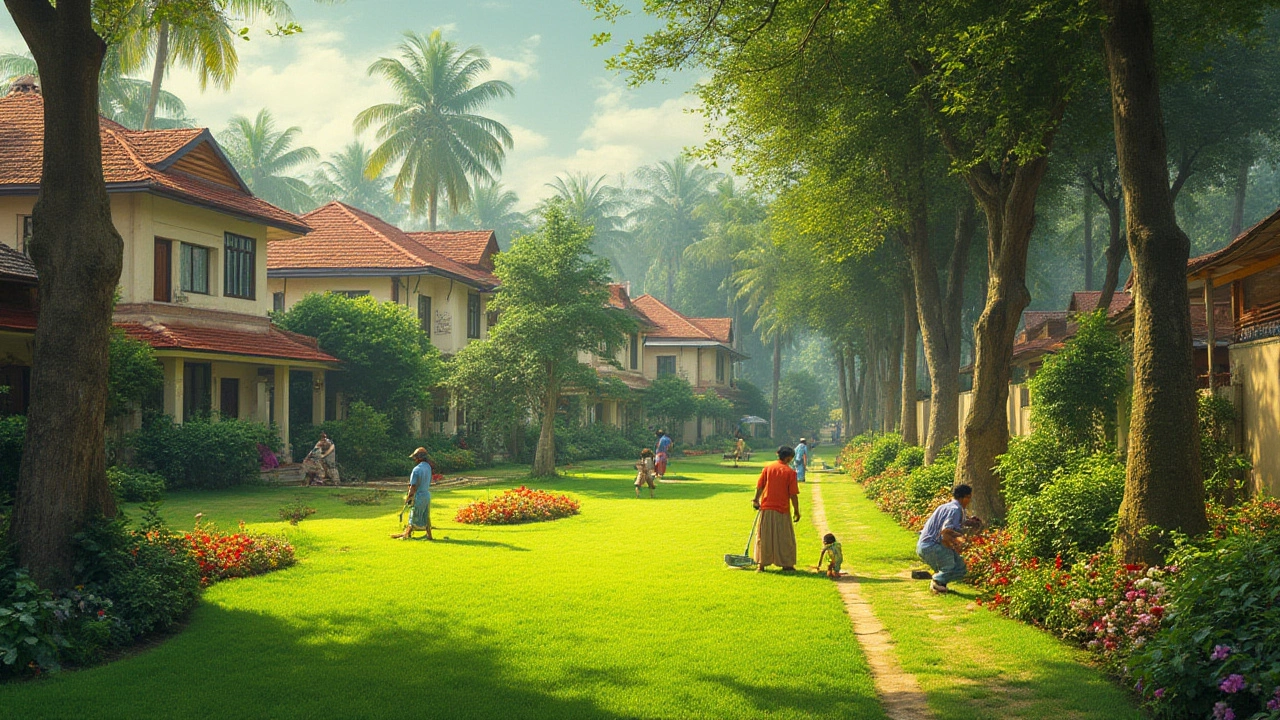Lawn Care for Sports Facilities: Tips, Tools, and Best Practices
When working with Lawn Care, the set of practices that keep grass surfaces healthy, safe, and ready for play. Also known as turf maintenance, it blends science, routine, and a bit of elbow grease to deliver a field that athletes trust.
Effective Sports Turf, the grass surface used for football, cricket, tennis, and other outdoor games depends on three core pillars: proper Irrigation, controlled water delivery that meets the grass’s moisture needs without waste, balanced Fertilization, nutrient applications that support root growth and wear resistance, and regular Ground Maintenance, tasks like mowing, aeration, and top‑dressing that preserve surface uniformity. Lawn Care encompasses all three, ensuring each step supports the next.
Key Elements of Effective Lawn Care
First, understand the climate and soil type of your venue. A sandy loam drains quickly, so it will need more frequent light watering, while heavy clay retains moisture and risks disease if over‑irrigated. Matching the irrigation schedule to the soil’s holding capacity prevents both drought stress and fungal growth.
Second, choose a grass species built for the sport’s demands. For high‑impact games like football, a blend of Kentucky bluegrass and perennial ryegrass offers resilience and quick recovery after cuts. For cricket pitches, a finer, low‑growth species reduces bounce variability. The right selection reduces the amount of fertiliser and water required, cutting long‑term costs—a point echoed in many construction‑budget articles.
Third, schedule aeration at least twice a year. Core aeration creates channels for air, water, and nutrients to reach the root zone. Pair this with top‑dressing using a thin layer of sand or compost; the mix improves soil structure and creates a smoother playing surface, which directly impacts athlete performance, as highlighted in post‑marathon recovery studies.
Mowing height matters too. Keep the blade set so the grass stays within its optimal growth range—typically 2‑3 inches for cool‑season grasses and 1‑2 inches for warm‑season varieties. Consistent height reduces stress and limits the need for aggressive fertiliser programs.
Fertilization should follow a soil‑test‑driven plan. Apply nitrogen in split doses during the growing season to avoid rapid, weak growth. Incorporate phosphorus and potassium based on test results to strengthen root systems and improve disease resistance. Using slow‑release formulas helps maintain steady nutrient levels, mirroring the steady profit‑margin strategies seen in construction finance guides.
Finally, monitor wear patterns. High‑traffic zones—goal lines, bases, and sprint lanes—show faster thinning. Target these spots with overseeding and localized fertilisation. This proactive step keeps the field uniform and minimizes the chance of injuries, a concern repeatedly raised in marathon health articles.
When you treat lawn care as a holistic system, each element reinforces the others. Proper irrigation reduces the risk of fungal disease, which in turn lessens the need for aggressive chemical treatments. Balanced fertilisation supports deeper roots, allowing the turf to recover quickly after heavy play, just as athletes need optimal recovery to bounce back after a marathon.
Beyond the field, good lawn care also protects the facility’s bottom line. Efficient water use and targeted fertiliser applications lower utility bills and chemical costs—mirroring the cost‑cutting tips found in interior design budgeting pieces. Moreover, a well‑maintained surface enhances the venue’s reputation, attracting more events and generating additional revenue, similar to how hybrid construction projects add value by combining strengths of different building methods.
Whether you’re managing a school playground, a municipal stadium, or a private sports club, the principles stay the same: know your soil, pick the right grass, water wisely, feed intelligently, and keep the surface level. The articles below dive deeper into specific aspects—like post‑marathon recovery, construction profit margins, and interior design costs—showing how the health of a playing surface ties into broader performance and financial outcomes.
Ready to explore more detailed guides, case studies, and practical checklists? Scroll down to see the full collection of posts that link lawn care to athlete health, facility budgeting, and design excellence.
